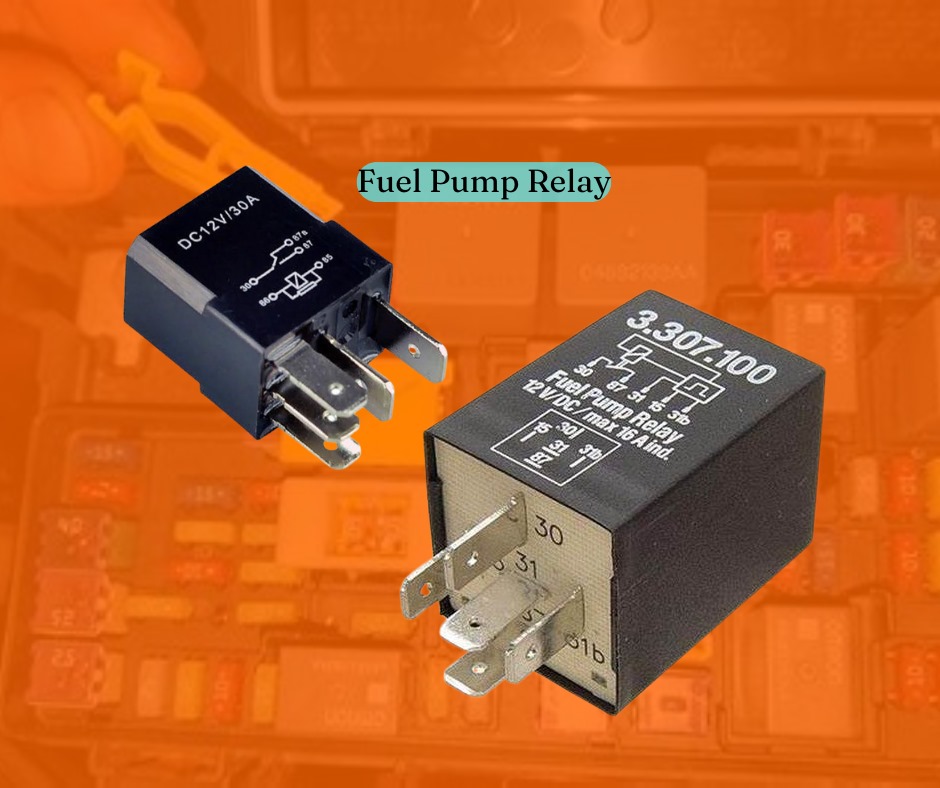Signs of a Faulty Fuel Pump Relay

Get to know how a failing fuel pump relay can affect your vehicle's performance and what signs to look for to prevent further damage.
the Role of a Fuel Pump Relay in Your Vehicle
The fuel pump relay is a small but critical component in your vehicle. It serves as an electronic switch that controls the power supply to the fuel pump. When you turn the ignition key, the relay is activated, prompting the fuel pump to send fuel from the tank to the engine. A functioning relay ensures that the right amount of fuel is delivered for your engine's needs, contributing to optimal vehicle performance and efficiency.
Failure of this relay can lead to a variety of problems as it disrupts the fuel supply to the engine. Understanding the role of the fuel pump relay is the first step in recognizing when it may be failing and requires attention.
Common Symptoms of a Faulty Fuel Pump Relay
Recognizing the symptoms of a faulty fuel pump relay can save you from unexpected vehicle breakdowns. One of the first signs is difficulty starting the vehicle, as a malfunctioning relay may intermittently fail to provide power to the fuel pump. Additionally, engine stalling can occur while driving if the fuel pump relay cuts off power to the fuel pump. This can be particularly dangerous if it happens while in traffic.
Other symptoms include a vehicle that sputters or hesitates, which indicates an inconsistent fuel supply to the engine. You might also notice poor engine performance or decreased fuel efficiency. In some cases, you may hear the fuel pump running continuously, even when the vehicle is off, suggesting a stuck relay. If you experience any of these issues, it's crucial to investigate the fuel pump relay as a potential cause.
Troubleshooting Tips: Diagnosing Fuel Pump Relay Problems
Diagnosing a fuel pump relay issue involves a few steps. Initially, check the vehicle's fuse box for the relay and examine it for any signs of damage or burnt contacts. You can also listen for a clicking sound from the relay when turning the ignition key, as this can indicate whether the relay is engaging. If there's no sound, the relay may not be functioning.
For a more in-depth diagnosis, use a multimeter to test for continuity in the relay. If the relay fails this test, it's likely defective and needs to be replaced. Additionally, swapping the fuel pump relay with another identical relay in the fuse box can help determine if the problem lies with the relay or elsewhere in the fuel system.
The Impact of Ignoring Fuel Pump Relay Issues
Ignoring signs of a failing fuel pump relay can lead to more severe consequences over time. The most immediate risk is being stranded due to a vehicle breakdown. However, prolonged use of a vehicle with a faulty relay can cause additional stress on the fuel pump, potentially leading to its failure and a costly replacement.
Moreover, an unreliable fuel supply can result in inconsistent engine performance and can even cause damage to the engine over time. To avoid these risks, it's critical to address fuel pump relay issues promptly when symptoms arise.
How to Replace or Repair a Faulty Fuel Pump Relay
Replacing a faulty fuel pump relay is typically a straightforward process that you may be able to do yourself. Begin by locating the relay in the fuse box, which is often found under the hood or within the interior passenger compartment. After identifying the correct relay, disconnect the battery, remove the old relay, and replace it with a new one.
If you're not comfortable performing this task, or if troubleshooting suggests a more complex issue, it's advisable to seek the assistance of a professional mechanic. They can perform a comprehensive diagnosis and ensure the correct repairs are made, getting you back on the road safely and with confidence in your vehicle's performance.

 Loading..
Loading..